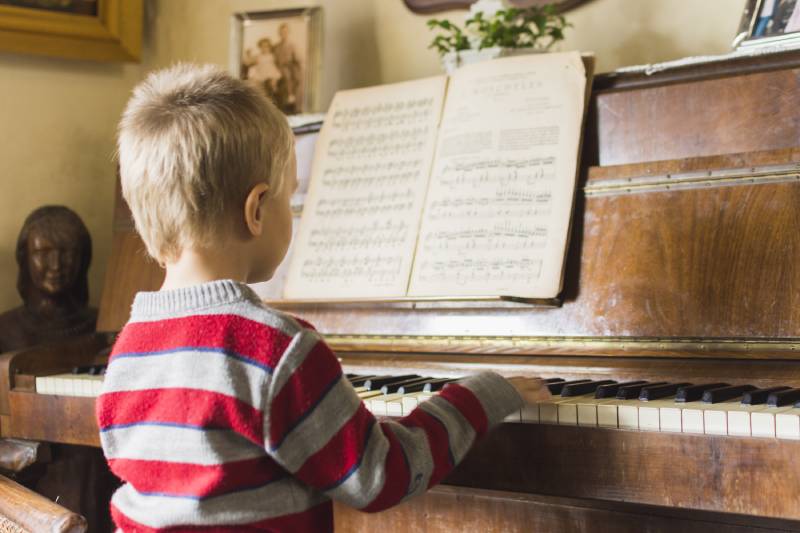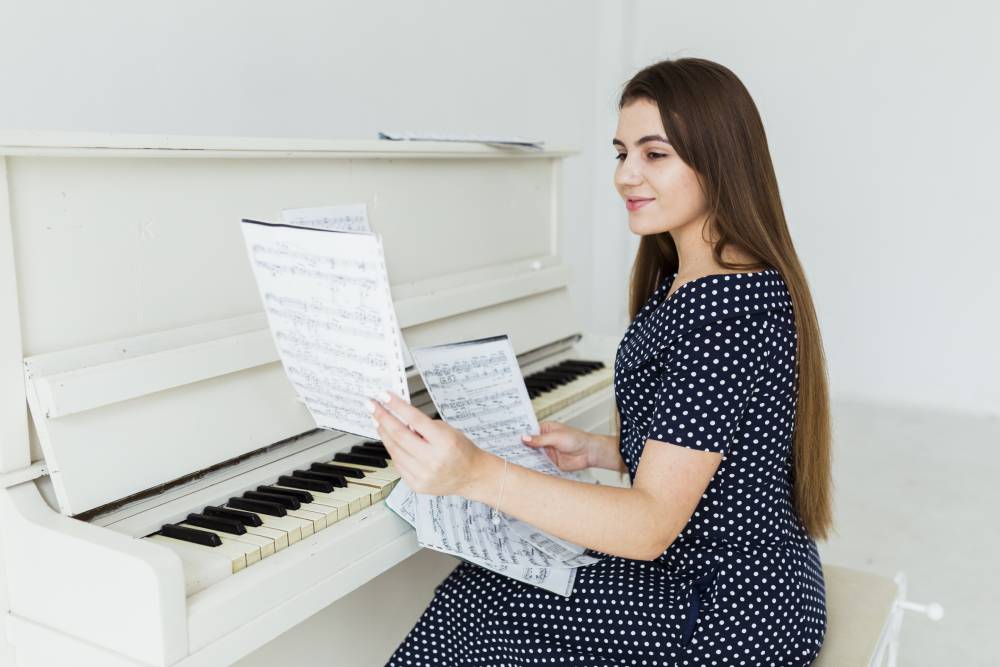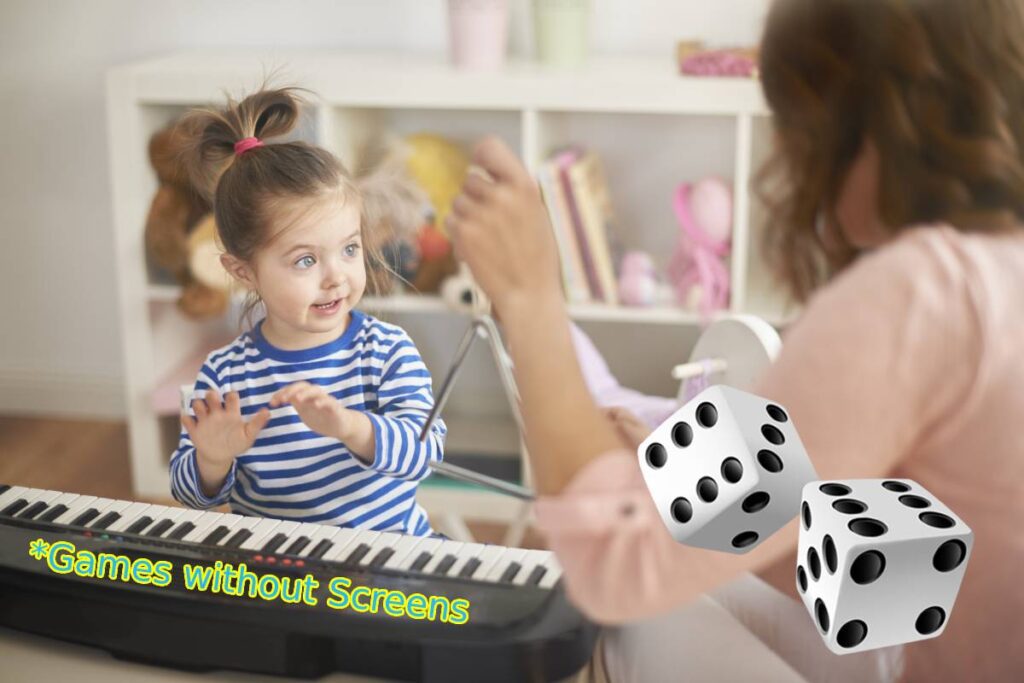
As a teacher, using piano games for kids is a great way to make learning fun. Games with a clear learning objective and the right materials can help kids learn to see music as a joy instead of a chore. In this article, I’ve put together 9 games that you can use today with your students or child.
Piano Games for Kids #1: Find the Black Notes
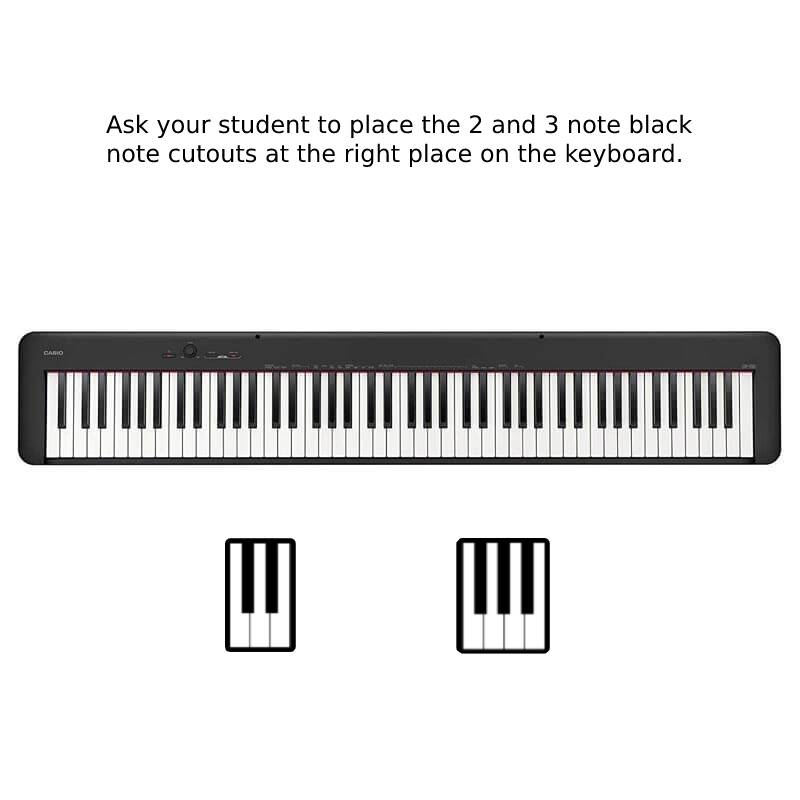
Materials: print the black notes PDF
Objective: Identify the black note patterns of the piano keyboard.
This game is for children aged 4-7. This easy game is designed to teach beginners who are just starting out, to identify the groupings of 2 and 3 black notes on the keyboard. As a result, kids will be able to quickly identify the note names by recognizing these repeating patterns.
How to play: Cut out the items of the PDF and ask the child to place the black notes on the matching notes of the piano.
Game #2: Searching for D & F
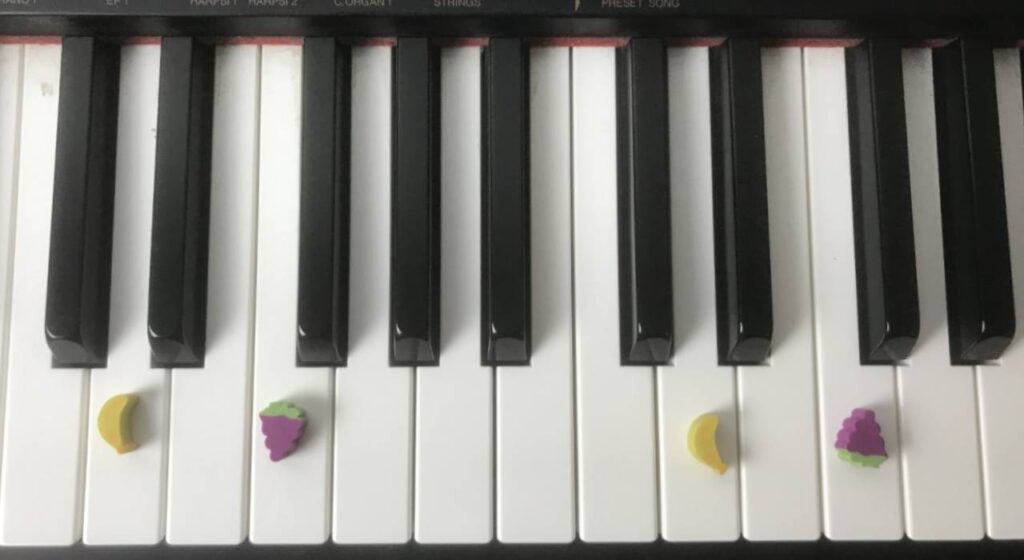
Materials: at least 2 different fruit shaped erasers or other such fun objects.
Objective: Learn to use visual cues to quickly identify note names.
How to play:
Step 1: Ask the child to place one of the fruit erasers (for ex. a banana) on the D-note. To do this, teach the child to identify the D-note by first identifying a grouping of 2 black notes. Then, show them that the D-note is the one in the middle. Afterwards, ask them to identify the remaining D-notes across the keyboard by placing other similar fruit erasers on them.
Step 2: Using a different fruit eraser (for ex. a strawberry), ask the student to identify the F-note by placing the eraser on the appropriate note. Teach them to identify the note as the white note on the far left of the grouping of 3 black notes.
#3: Write-in the A
Materials: Print the Colour in the A – PDF
Objective: identify the A note and use the Alphabet find the other notes.
How it works:
Aid the student to identify the A notes on the printed PDF. Then, ask them write the letter A in the appropriate place on the sheet. finally, using the Alphabet, ask the student to write in the remaining letters.
Piano Games for Kids #4: Roll the Dice
Materials: a dice or a dice app, animal figures
Objective: Learn all the note names in random order
This is one of the piano games for kids that is the most popular. It is also very effective for learning the note names.
How to play:
The teacher and student each pick an animal figure of their choice and place it on middle C. First, the student rolls the dice and moves their animal up the keyboard, based on the number they’ve rolled. Whichever note they land on, they must name the correct note. If they don’t, then they may need to return to where they were. After, the teacher takes a turn. The player that arrives at the end of the keyboard first wins.
Variation: ask the student to also name the note that the teacher lands on. If they succeed, they get 1 bonus point, and move their animal up one note.
#5: Bass Clef: Good Boys Deserve Fudge Always
Materials: the Bass Clef Exercise Sheet – PDF
Objective: use a mnemonic device to learn the notes of the bass clef.
How it works:
Step 1: print the Bass Clef Exercise Sheet. Firstly, teach your student that the bass clef is played with the left hand. Next, explain that there are notes on the lines and notes on the spaces. To identify the notes on the lines, teach the student the acronym: Good Boys Deserve Fudge Always. Finally, ask them to write the first letter of each word in the corresponding space beneath the note.
Step 2: The next exercise features the 4 notes in the spaces of the bass clef. I came up with All Cows Eat Goop. You can use that one, however you also ask your student to try and come up with their own. Over the years, my students have come up with some pretty creative ones: All Cows Eat Garbage, All Crocodiles Eat Giraffes, ACE-G.
#6: Treble Clef: Every Good Boy Deserves Fudge
Materials: the Treble Clef Exercise Sheet – PDF
Objective: use a mnemonic device to learn the notes of the treble clef.
How it works:
This is the same as the previous exercise, however using a mnemonic device for the treble clef. I prefer to start with teaching the bass clef, rather than the treble clef, because it usually the one that gets the least practise.
Rhythm Games
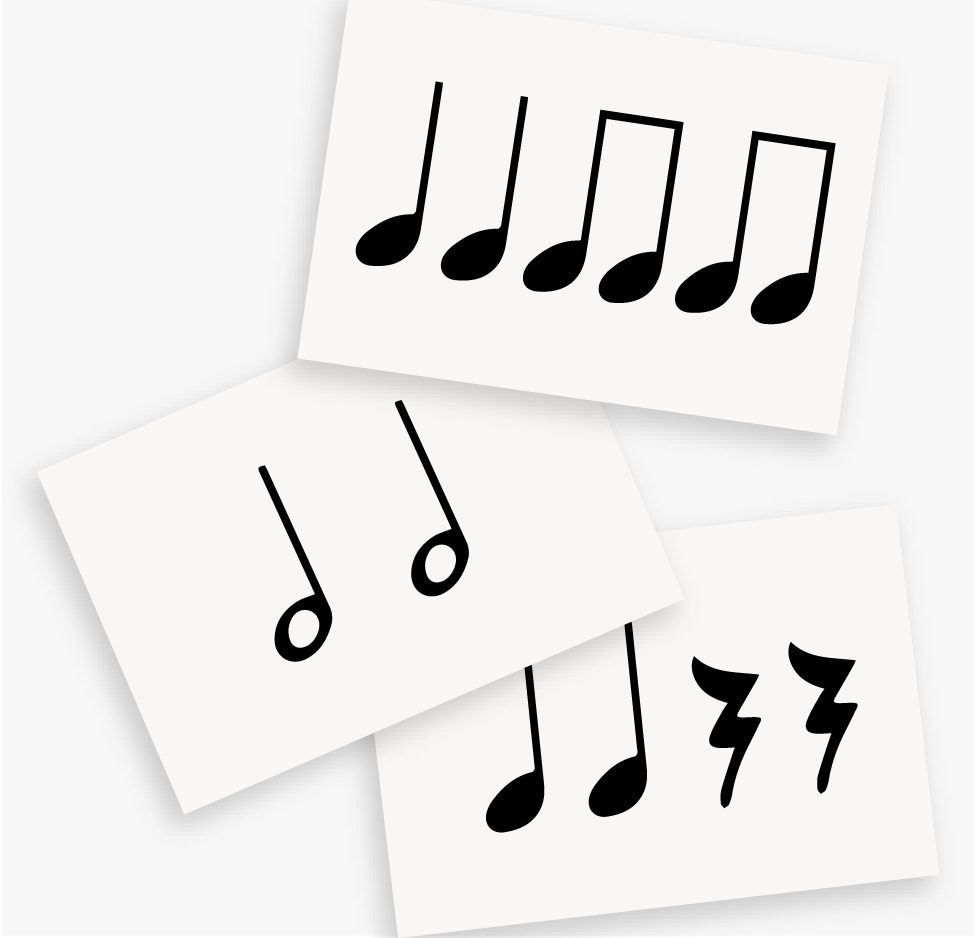
Developing an understanding of rhythm in music is very important. In my experience, rhythm is often one of the most challenging elements to master for many students. Therefore, I’ve prepared some great materials and games that will make learning rhythm really fun!
#7: Piano Rhythm Games For Kids : Name that Rhythm
Materials: Flash cards of a Whole Note, Quarter Note, Half Note, Dotted Half Note, Eighth Notes
Objective: Learn the names of each rhythm and understand how to count them.
How to play: Place the rhythms in a large envelope. For the first round, have the student reach into the envelope and pull out a rhythm and name it.
For the second round, they have to pick out a rhythm and clap and count it.
#8: Name that Rest
Materials: Flash cards of quarter rests, whole note rests, half note rests and eighth note rests.
Objective: Associate the different types of rests with their corresponding rhythms.
How to play: First, teach the student the names of each rest. Next, line up all the rests on one side of the table (or piano) then line up the corresponding rhythms on the other. Ask the student to place each rhythm card next or on top of the corresponding note. Each time they do this successfully, ask them to name the rest. They will quickly learn that all they have to do is name the rhythm and add the word “rest” at the end. For example, eighth-note rest.
*A good trick to help differentiate the whole rest and the half note rest is the use the trick “Hat Note Rest.” The half note rest looks like a hat!

#9 Words and Rhythms
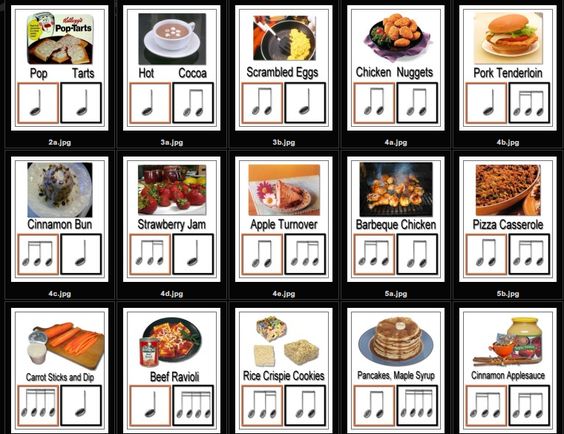
Materials: Flash cards of different assortments of rhythms and the Words and Rhythm Sheet.
Objective: Associate words to difficult rhythmic figures.
How to play: Find or create flash cards that use the rhythms displayed above. Then, using a drum or clapping, teach the student to associate the rhythmic figure with word flow.
*The rhythms on top line are suited for 5-7 year olds, while the ones on the bottom 2 are suited for 8 and up.
In Conclusion
This list of 9 piano games for kids is perfect for adding a little break between playing songs. These activities are fun, and better yet, they each contain clear learning objectives that will great help students learn the basics of music.
Do you have other game ideas that I didn’t cover in this article? Please add them in the comments!
[vivafbcomment]
About Musiprof
Thank you for reading our blog article the 9 Piano Games for Kids to Make Learning Fun.
Musiprof is a Canadian Music organization that connects piano teachers to students in Montreal, Toronto and Vancouver.

